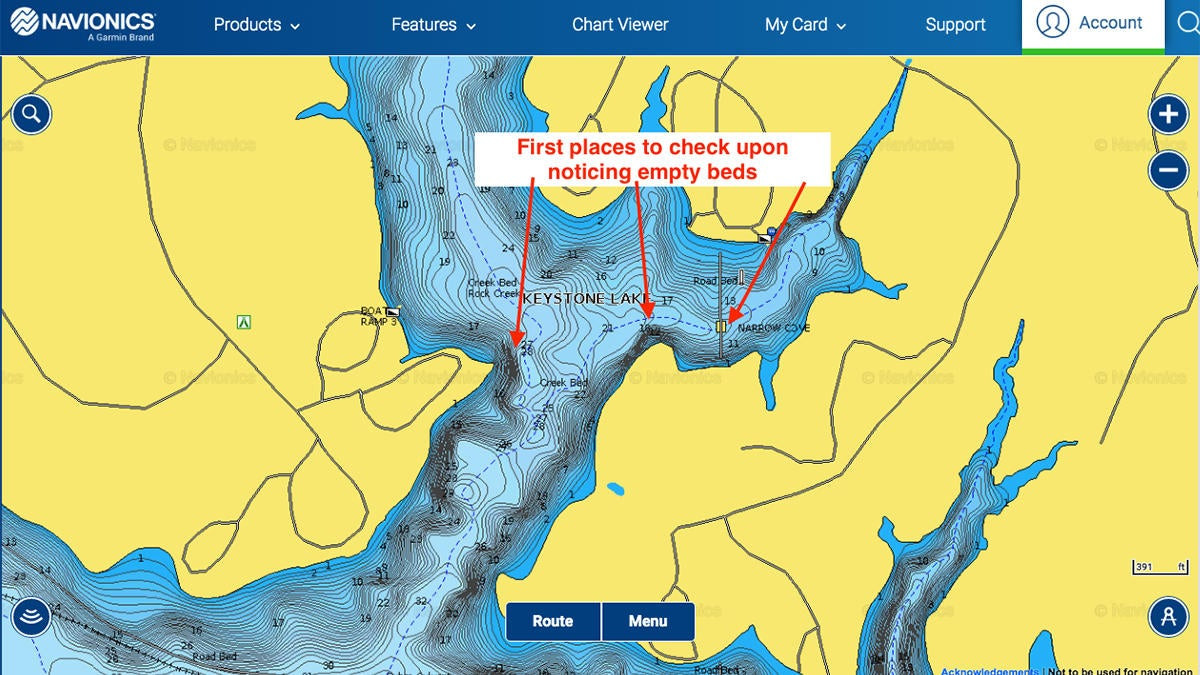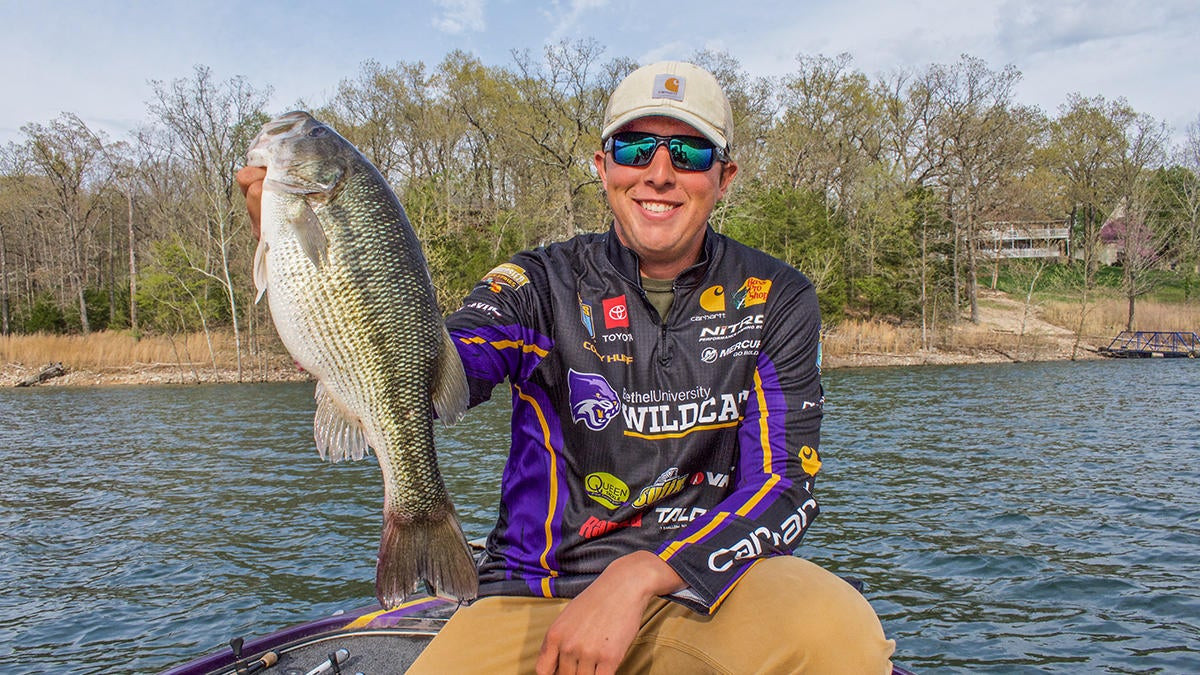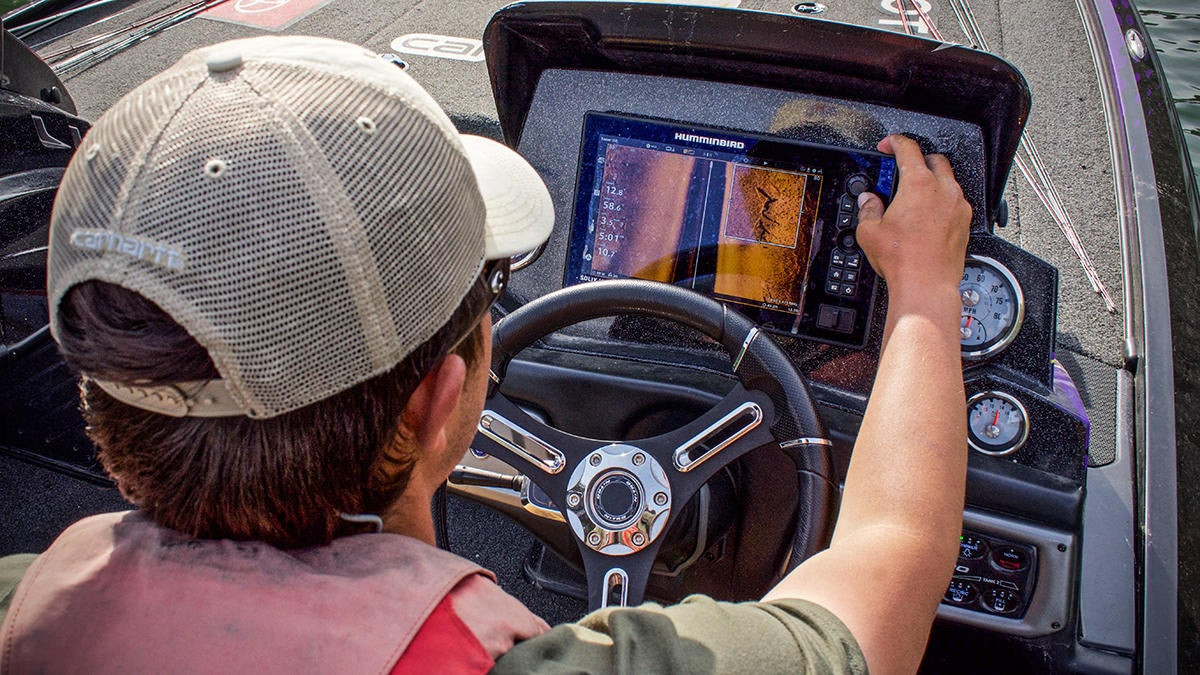In bass fishing, it’s often been said catching fish isn’t the hard part. Finding them is. Are fish post-spawn or prespawn? Do you need to be fishing shallow, in-between, or spending your time offshore? These are questions bass anglers face constantly and the answers to them drastically affect the lures or presentations you should employ.
While there is no comprehensive solution to finding bass in a fishery on a given day, you can cut down your search time by moving with the fish. Most of the country is staying extremely close to home due to COVID-19 precautions. While that raises plenty of negatives, one positive factor is this has allowed more time to fish our local lakes than usual, providing anglers the opportunity to stay with bass as they transition through their spawning progressions.
Bassmaster Opens pro Cody Huff has been practicing this logic while following bass throughout their seasonal movements on famed Ozark fisheries such as Table Rock and Bull Shoals. This is the first time in years Huff has spent a spring in his native southwest Missouri and he’s put in countless hours on the water. Huff believes keeping tabs on the fish right now will help you stay with them all year long and offered a few tips to help you do just that.
Break your lake into sections
Each lake is different, but Huff goes a step further and breaks down an individual fishery into 3 unique sections. Spending the majority of his time on man-made reservoirs, Huff typically sorts a lake into a dam segment, a mid-lake area and a river (or rivers) section. Huff knows bass in each of these areas will be on different seasonal timelines in the spring.
The average depth, water color, structure types and even water temperature is likely different in each section. Generally speaking, bass in the deepest, clearest water near the dam or lower end of a lake is where Huff looks for the first wave of spawning bass. This is followed by mid-lake and lastly the riverine zones. Allowing fishermen to follow the spawn “up the lake” if they so chose.
For 95 percent of us anglers, bass are easiest to find in the spring when they are in relatively shallow water. Therefore, Huff looks at this time of year as a way to locate large groups of fish, with hopes of staying with them and ultimately following the bass out to their offshore haunts.
“After you start seeing empty beds or stop catching fish shallow in the lower end you have a couple options,” Huff explained. “The first option would be to head up the lake using the same patterns looking for fresh fish in shallow water. Or you can look for closest deep water to where you were catching shallow, spawning fish and try to follow them out.
“That could be a channel swing, a point or even a suspending boat dock here in the Ozarks. But those fish have to go somewhere when they disappear from the shallows and in my opinion I feel like they largely move together. Those fish don’t just vanish.”
Rely on your confidence to start
When you begin to try and break your lake down, Huff advises starting with what you are most confident in. That pertains to location, the structure you focus on and what lures you use. The assurance made by starting with an areas and technique you believe in helps our decision making process throughout our day.
“Confidence is everything in bass fishing,” Huff said. “Once you’ve broken the lake down and you’re looking for the first bite, start with what’s most comfortable. If I have experience on a lake the first thing I do when I go back is start in a creek arm I know well. That comfort or confidence allows you to fish more freely and helps you dial things in quicker.”
There is a fine line between using past experience to your advantage and “fishing history”. Huff’s tip of starting in an area you have confidence in doesn’t mean you’ll be able to catch fish there the same way you did last year. Rather, you’ll have a feel for how bass have used structure the area offers in the past, which will help shorten the learning curve in the present.
Huff admits he likes to cover water and do a fair share of running and gunning but when trying to move with bass on a local fishery, he’ll force himself to stay in one area until he gets a few bites.
“If you know there are bass in the area don’t let yourself leave until you start to understand what they’re doing,” Huff explained. “I’m not saying you have to catch a bunch of big ones or anything, but you want to at least give yourself a clue as to what stage they are in. One small clue can go a long way in the spring.”
Knowing, or at least having an idea of what bass are doing in your starting area, is imperative if you are trying to follow those fish. Whether you take what you learn and apply it up the lake to a different section, or stay in one area and chase those fish as they come and go; it’s best to have a frame of reference to get started.
Apply what you learn to the rest of the lake
Once you’ve broken your lake into sections and mined your starting area(s) for clues as to what stage the bass are in, apply your findings to the rest of the fishery. Concentrate on where you found fish initially and ask yourself a few questions.
In what stage were the fish? In what depth and structure were they? What did the contour lines look like in those areas?
Answer these questions, make an educated guess as to where you believe the fish will be in another area of the lake and then go fish it. The knowledge gained in your first spot will help you be more efficient in the next area. Huff advises against fixating on any single element and instead tries to look at each one as a puzzle piece to the larger picture.
As bass get further offshore many anglers focus on the depth they are finding fish in and begin to get tunnel vision for a specific depth range. While Huff agrees keying in on ideal depths can make you more efficient, he also believes the type of contours the fish are grouping up around are a crucial factor.
“Contour lines and the way contours break is a huge element of finding fish offshore, whether they are coming or going,” Huff said. “People like fishing a piece of structure like a brush pile or a point, but fish will often hold to something as subtle as a bottom change.”
For this reason Huff looks for broad patterns when finding schools of bass along with specific details. Are the fish holding to slow-sloping points, are they near a steep bank that breaks off into the deepest water in the area? Knowing offshore bass are keying in on brush piles is great, but understanding the wide-ranging factors helps you unlock the blueprint to finding bass throughout the lake.
“Mapping systems in your electronics or other online resources are great tools,” Huff explained. “Both for noticing these ‘big-picture’ patterns throughout a lake or for making guesses as to where the fish might go in a smaller area. I am constantly studying my Humminbird Lakemaster maps.”
You don’t have to be a pro angler locate and move with bass throughout their spring transitions. It may seem intimidating at first but thanks to the COVID quarantine, there has never been a better time to try. Take Huff’s advice and spend the next few weeks moving with your local schools of bass. You’ll learn a bunch and likely catch more fish in the process.















